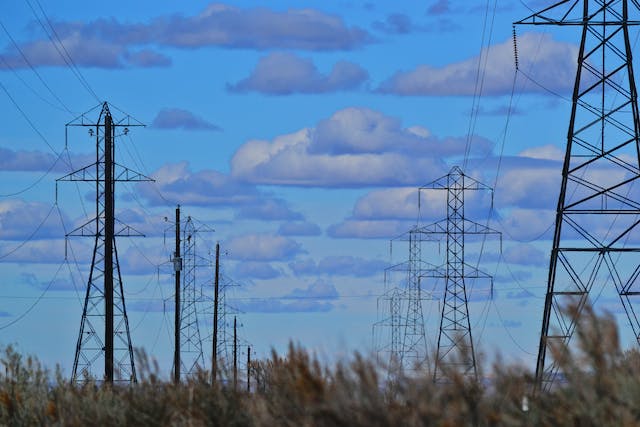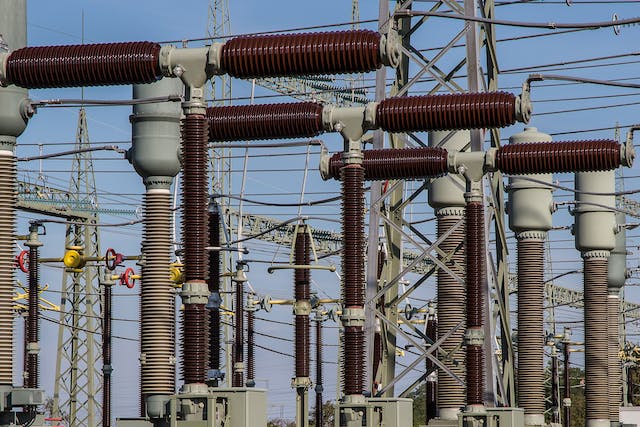A power grid is an interrelated network that is used to deliver electricity from producers to consumers. It is made up of generating stations that produce electric power, electrical substations that are responsible for stepping electrical voltage up for transmission and down for distribution, high voltage line carrying power from far sources to demand centers, and distribution lines that connect customers individually. Power grids have different sizes. Some of them cover single buildings through national grids, which cover whole countries, while some can cross continents, which are called transnational grids.
Today, almost all households and buildings in different parts of the world have electricity. It has helped us in so many ways, especially in our daily lives. But have you ever wondered about how the power grids we have today began? If you are also curious, read on because today, we are giving you the history of the power grid.
History
Early electric energy was created close to the device or service that required that energy. Electricity competed with steam, hydraulics, and coal gas in the 1880s. Coal gas was first made on the customer’s premises. It later on grew into gasification plants that appreciated economies of scale. In a developed place, cities had networks of piped gas that are used for lighting. However, gas lamps produced poor light, and it wasted heat. Aside from that, it also made rooms smoky and hot while giving off hydrogen and carbon monoxide. Using gas lamps also posed a fire hazard. With this, electric lighting became advantageous in the 1880s compared to gas lighting.
The economies of scale were taken advantage of by electric utility companies. They moved to centralized generation, distribution, and management systems. After the war of the currents was established in favor of AC power, with long-distance power transmission, it became possible to connect stations to balance the load and improve load factors.
The war of the currents is also known as the battle of the currents. It was a series of events that surrounded the introduction of competing for electric power transmission systems during the late 1880s and early 1890s. This grew out of two lighting systems that were developed in the late 1870s and early 1880s. One is the arc lamp street lighting that runs on high-voltage alternating current. The other one is the large-scale low-voltage direct current indoor incandescent lighting marketed by Thomas Edison’s company.
The Edison system was challenged with new competition, which was an alternating current system developed by George Westinghouse’s company. This system used transformers to step down from a high voltage so AC could be used for indoor lighting. It allowed transmission of power over longer distances from more efficient large central generating stations, which was generally favored when the war of the currents was settled.
In 1901, the Neptune Bank Power Station was built in the United Kingdom by Charles Merz of the Merz & McLellan consulting partnership. By 1912, it was developed into the largest integrated power system in Europe. Charles Merz was appointed as the head of a parliamentary committee. In 1918, his findings led to the Williamson Report, which created the Electricity Supply Bill of 1919. This was the first step towards an integrated electricity system.
The Electricity Act of 1926 resulted in the setting up of the National Grid. The nation’s electricity supply was standardized by the Central Electricity Board, and they established the first synchronized AC grid that runs at 132 kilovolts and 50 Hertz. In 1938, this began operating as the national system called the National Grid.
In France, it was in the 1900s when electrification or the process of powering by electricity began. There were 700 communes in 1919, which grew to 36,528 in 1938. During the same time, nearby networks also began to interconnect, including Paris in 1907, the Pyrenees in 1923, and almost all of the country in 1938. The grid is the world’s most dense by 1946. In that same year, the state nationalized the industry, by uniting the private companies as Electricite de France. The frequency was also standardized at 50 Hz, and the 225 kV network replaces 110 and 120. Service voltage was standardized from 1956 at 220 / 380 V, which replaced the previous 127/220 V. The new European standard called the 400 kV network was then implemented during the 1970s.
In the 1920s in the United States, utilities created joint-operations to share peak load coverage and backup power. When the Public Utility Holding Company Act was passed in 1934, electric utilities were recognized as public goods of importance. With this, they were given outlined limitations and regulatory oversight of their operations.
Transmission line owners were required to allow electric generation companies to open access to their networks based on the Energy Policy Act of 1992. This led to a restructuring of how the electric industry operated in an effort to create competition in power generation. Electric utilities were no longer built at vertical monopolies, where the generation, transmission, and distribution were held by a single company. After the new act, the three stages could be divided among different companies to provide fair access to high voltage transmission. Incentives and loan guarantees for alternative energy production and advanced innovative technologies that avoided greenhouse emissions were allowed by the Energy Policy Act of 2005.
It’s amazing to know that many things had happened before many places in the world are provided with electricity. Today, it is one of the most important things for most people in their everyday lives. We hope the information we shared helped you in knowing more about the history of the power grid.

